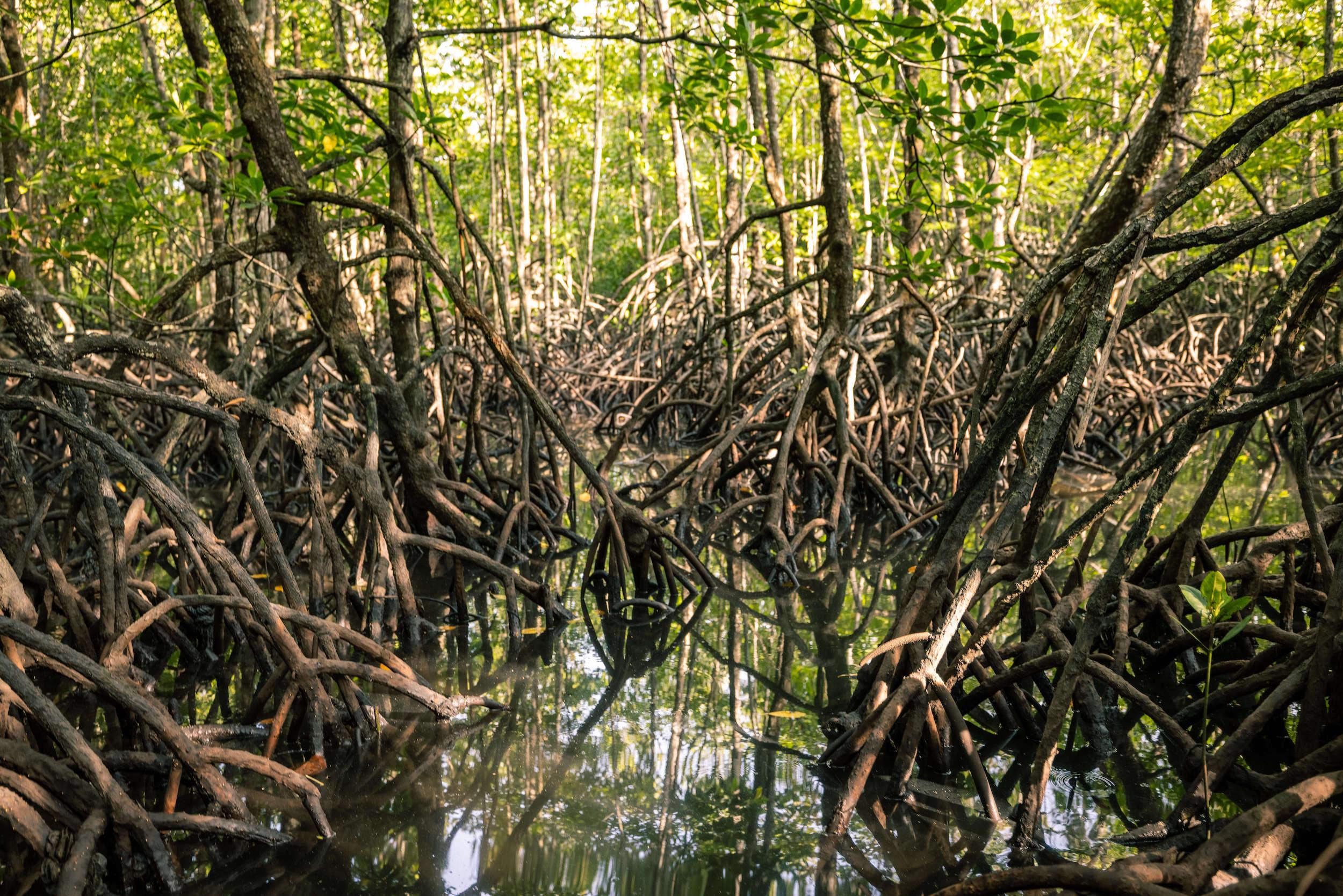
Blue carbon ecosystems keep our climate stable, provide homes for wildlife, and support coastal communities around the world. However, despite their importance, we are wiping them out. Our leaders must change course now and takerapid action to restore them.
Blue carbon – the carbon stored in coastal and marine ecosystems – is an unsung ally in our fight against the climate crisis. Marine vegetated habitats like mangroves, seagrasses, salt marshes, and kelp cover just0.2% of the ocean surface, but they contain50% of the carbon sequestered in marine sediments.
We should be prioritising them, but instead we are watching them disappear before our eyes. Approximately35% of the world’s mangroves and30% of all seagrass meadows have been lost or degraded over the last century. We are at the start of an‘extreme’ and ‘unprecedented’ climate crisis, and we are failing to protect the very ecosystems which could help us avert it.
For example, a Mediterranean seagrass calledPosidonia oceanica can sequester carbon at up to70x the rate of tropical forests. Yet the area it covers has shrunk by around35% over the last50 years, as a result of pollution, global heating and destructive fishing techniques.
Seagrasses, kelp, mangroves and salt marshes could all help us avoid runaway climate change if we let them. Beyond the coasts, whales also store vast amounts of carbon in their bodies. A single great whale can sequester 33 tonnes of CO2, which is safely storedon the seafloor when it dies and sinks.
Theymaintain healthy levels of phytoplankton – which fix carbon from the atmosphere into the ocean – through their faeces, and their migrations circulate nutrients through the ocean.
Again, we have directly undermined this precious climate mitigation, in this case through decades of industrial whaling. Restoring eight groups of baleen whale species to their pre-whaling abundance would takemillions of tonnes of carbon out of the atmosphere.
These contributions alone should be enough to make protecting blue carbon a top priority. However, the support offered by healthy marine and coastal ecosystems goes even further than this.
680 million of us live in low-lying coastal zones. As we face worsening extreme weather, storms and sea level rises, blue carbon ecosystems can reduce the damage they cause. Intact salt marshes reduce the height of waves by around18%, while mangroves absorb70-90% of wave energy.
Blue carbon ecosystems are also treasure troves of biodiversity. Mangroves are home to a unique range of species from manatees and dugongs to the endangeredBengal tiger. Mangrove and kelp forests provide shelter and food for juvenile fish, propping up fisheries and livelihoods around the world. Meanwhile, seagrasses supportthousands of species, and there are over500 species of plant found in salt marshes.
Beyond the immediate benefits to food security and livelihoods which come from safeguarding these habitats, many coastal communities have deep cultural bonds with them. Hendrik Hermawan, a member ofAkar Bhumi, a mangrove planting project in Indonesia, told us that “planting is part of our culture and livelihood…when we lost the mangroves, we also lost our determination, our spirit and our dignity.” This loss has spurred direct community activity to reverse it and restore the mangrove forest.
Mangrove losses have slowed significantly, going from a yearly average loss rate of 0.21% between 1996-2010 to 0.04% between 2010-2020. However, mangrove cover is still dramatically lower than it was in the past, and we are running out of time to protect them.
While 42% of the world’s mangroves are reportedly protected, in Southeast Asia, home to the world’s largest amount of mangroves but also some of the greatest losses, protection rates are only around 20%. The decline may be slowing, but we need to reverse it.
On the international stage, this spirit of action is sorely lacking. With some exceptions, like Seychelles’ ambitious plan to protect50% of its seagrasses and mangroves by 2030, these environments have largely been left to disappear unnoticed. In particular, wealthy, polluting nations must follow Seychelles’ lead and change course now.
World leaders must commit to a 30×30 protection plan, protecting 30% of the high seas and 30% of national waters by 2030. To be worthy of the word ‘protection’, this would include banning highly destructive fishing techniques like bottom trawling in any marine protected area.
Leaders can now also set binding and measurable biodiversity targets to turn theKunming-Montreal Global Biodiversity Framework into reality, and formally adopt and ratify theUN High Seas Treaty. These agreements have made a thriving ocean a genuine possibility, but they are worthless if they are not followed by sustained action to implement them.
The role of blue carbon ecosystems in fighting the climate crisis should also be recognised innational climate commitments, integrating them into broader efforts to cut emissions and boost carbon sequestration. Climate finance can then be used to support ocean protection and restoration at the community level.
Lastly, while much of the action we urgently need is to restore already degraded or lost environments, we can prevent that destruction from happening in the first place in the deep ocean. A moratorium on deep-sea mining is critical, preventing mining companies from disturbing vast amounts of carbon which have been building up on the seafloor for millions of years.
We are currently throwing away a golden opportunity to tackle the climate crisis, bolster sustainable fisheries and allow wildlife to thrive. The ocean sustains us all, and its future will be determined by how boldly and urgently we act now.
Source : EJF





